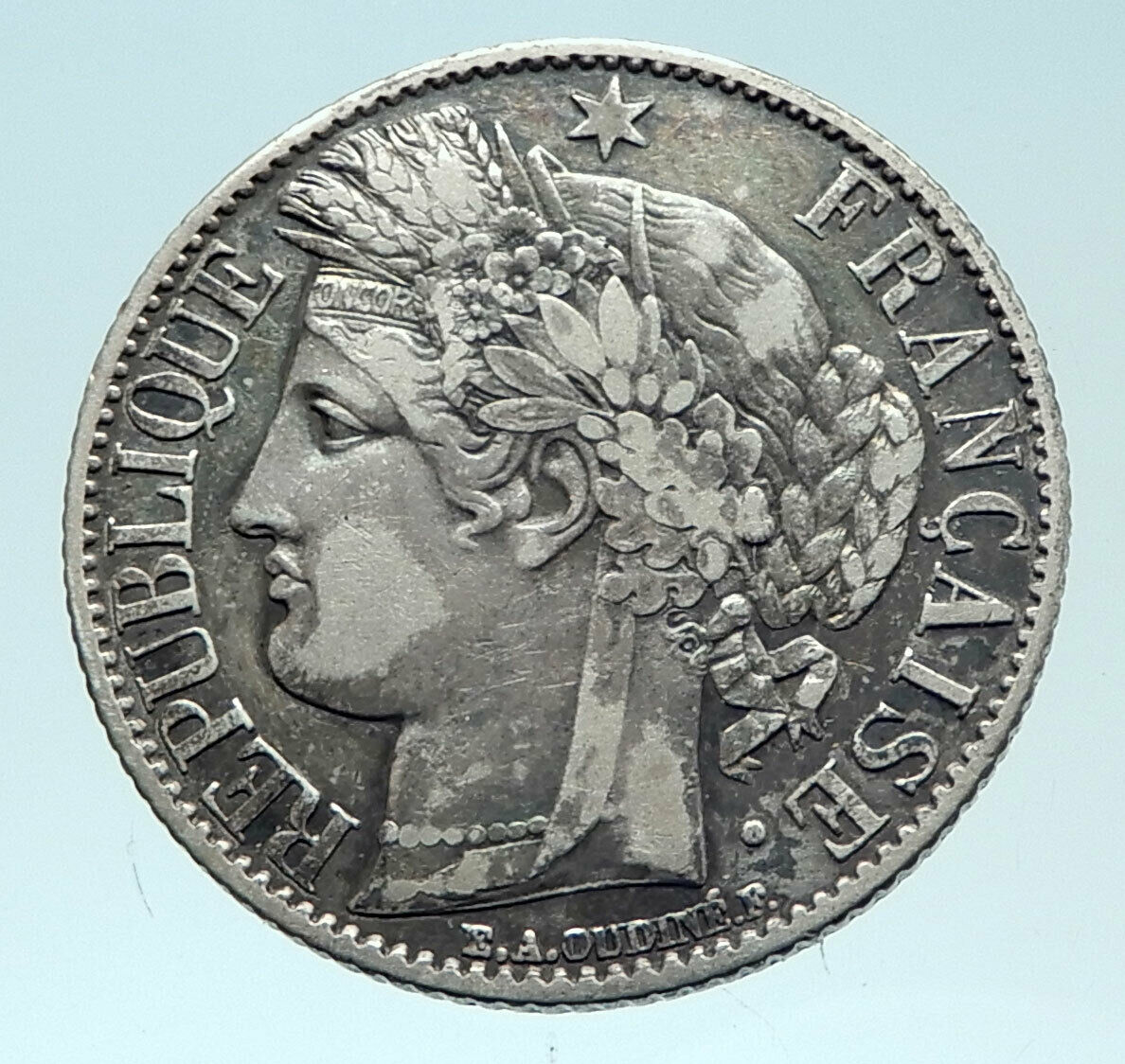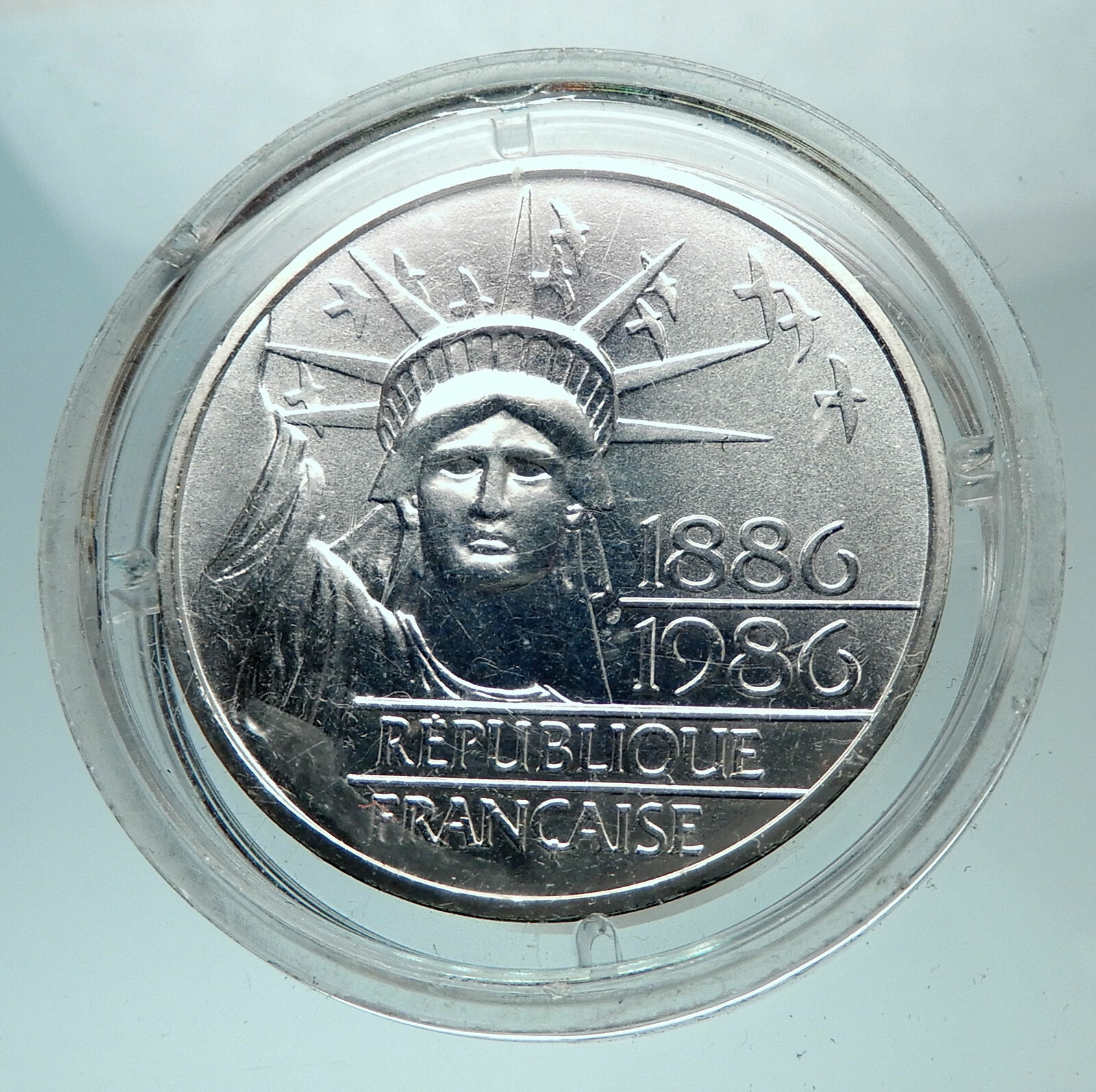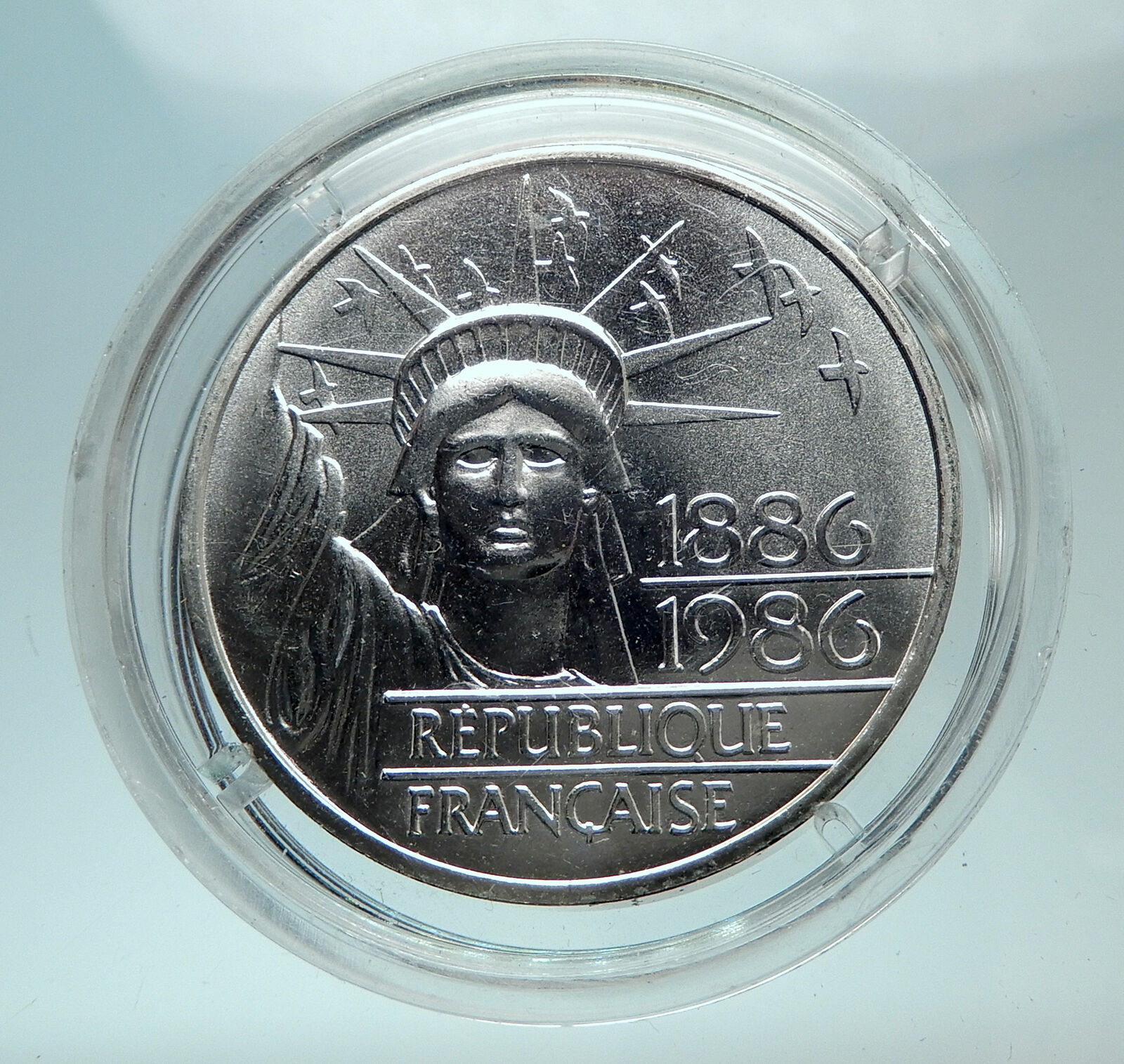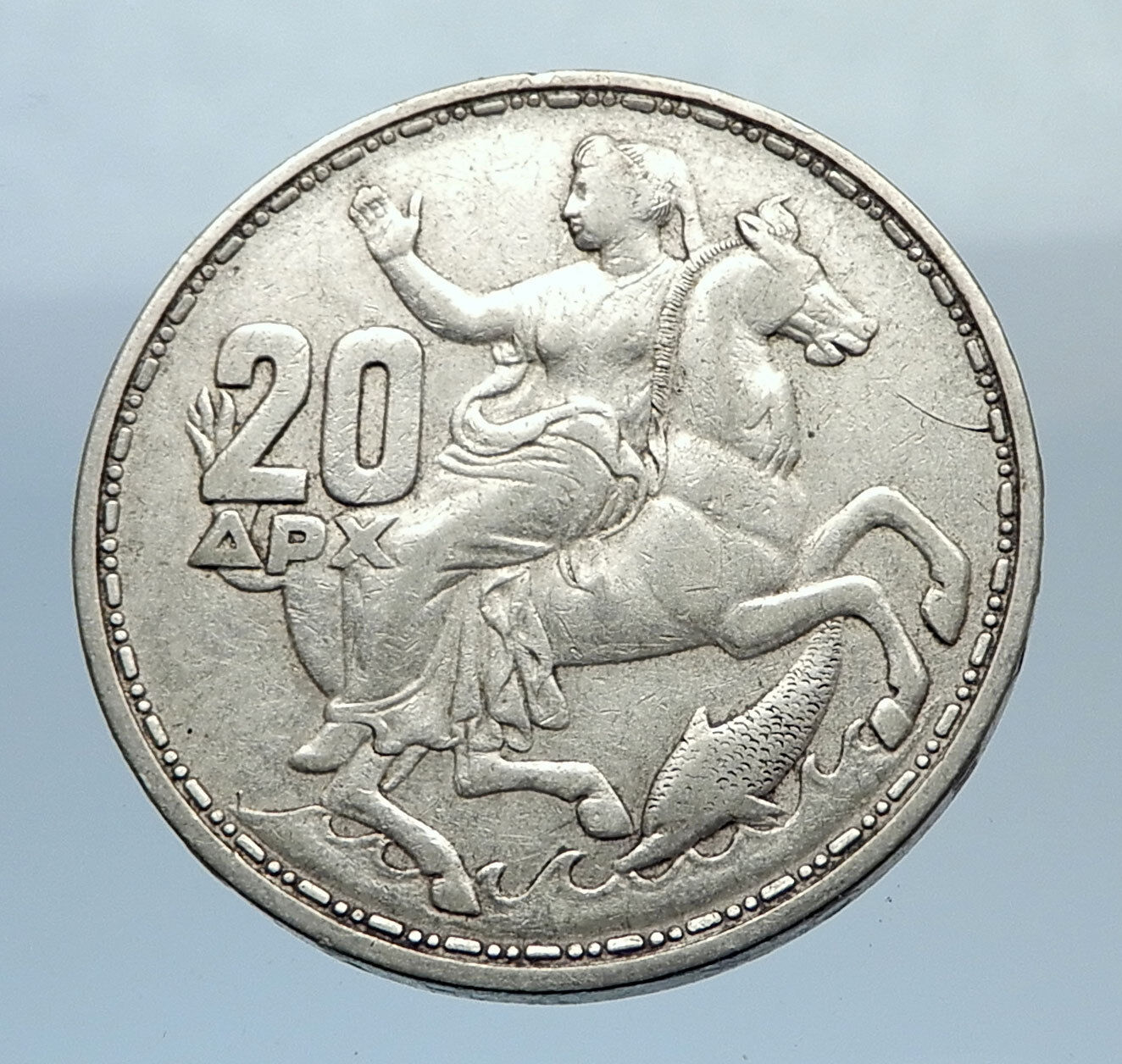|
France – Provincial. Provence (comté).
Robert I de Naples (of Anjou). 1309-1343
as Count of Provence
Silver Carlin (Provençal coronat d’argent) (Sol Coronat) 22mm (2.09 grams)
Reference: Roberts 5961
Certification: NGC VF DETAILS 2838167-015
+ R Ih´ R ЄT SICIL´ RЄX, crown; double annulet stops.
Cross fleurdelisée; lis in quarters.
You are bidding on the exact item pictured, provided with a Certificate of Authenticity and Lifetime Guarantee of Authenticity.
 Robert of Anjou (Italian: Roberto d’Angiò), known as Robert the Wise (Italian: Roberto il Saggio; 1276 – 20 January 1343), was King of Naples, titular King of Jerusalem and Count of Provence and Forcalquier from 1309 to 1343, the central figure of Italian politics of his time. He was the third son of King Charles II of Naples and Maria of Hungary, and during his father’s lifetime he was styled Duke of Calabria (1296-1309). Robert of Anjou (Italian: Roberto d’Angiò), known as Robert the Wise (Italian: Roberto il Saggio; 1276 – 20 January 1343), was King of Naples, titular King of Jerusalem and Count of Provence and Forcalquier from 1309 to 1343, the central figure of Italian politics of his time. He was the third son of King Charles II of Naples and Maria of Hungary, and during his father’s lifetime he was styled Duke of Calabria (1296-1309).
Robert was born around 1276, the third son of the future Charles II of Naples (then heir apparent) and his wife Mary of Hungary. His father was the son of the incumbent King of Naples, Charles of Anjou, who had established an Italian realm a decade earlier in 1266. During the Sicilian Vespers directed against his grandfather Charles, Robert was the hostage of Peter III of Aragon, his grandfather’s enemy. In 1285, Robert’s grandfather died at Foggia in Italy, leading to his father (then a hostage) becoming King of Naples as Charles II, with Robert’s elder brother, Charles Martel of Anjou as heir apparent.
After the death of his elder brother, Charles Martel of Anjou in 1295, Robert, became heir to the crown of Naples, passing over his child-nephew Charles; to obtain the crown of neighbouring Sicily, he married King James of Sicily’s sister Yolanda, in exchange for James’s renunciation of Sicily. However, the Sicilian barons refused him and elected James’ brother, Frederick II. The war continued, and with the Peace of Caltabellotta (1302) Robert and the Angevin dynasty lost Sicily forever, their rule limited to the south of peninsular Italy.
Robert inherited the position of papal champion in Italy; his reign being blessed from the papal enclave within Robert’s Provence, by the French Pope Clement V, who made him papal vicar in Romagna and Tuscany, where Robert intervened in the war of factions in Florence, accepted the offered signiory of that city, but had to abandon it due to Clement’s opposition.
The leader of the Guelph party in Italy, Robert opposed the sojourn of Emperor Henry VII in Italy (1311-13) and his occupation of Rome in 1312. After Henry’s death, the Guelph reaction against the Ghibelline leaders in northern Italy, Matteo Visconti and Cangrande della Scala, made it seem for a time that Robert would become the arbiter of Italy.[4] Already ruler of wide possessions in Piedmont, Robert’s prestige increased further when in 1313 the pope named him Senator of Rome,[5] and when he became Lord of Genoa (1318-34) and Brescia (1319) and from 1314 onwards held the resounding papal title of imperial vicar of all Italy, during the absence in Italy of the Holy Roman Emperor, vacante imperio.[6]
In 1328 he fought another emperor who had ventured into Italy, Louis IV of Bavaria, and in 1330 forced John of Bohemia to quit northern Italy. Robert’s hegemony in Italy was diminished only by the constant menace of Aragonese Sicily.
When the succession to the margraviate of Saluzzo was disputed between Manfred V and his nephew Thomas II in 1336, Robert intervened on behalf of Manfred, for Thomas had married into the Ghibelline Visconti family. Robert advanced on Saluzzo and besieged it. He succeeded in taking it and sacking it, setting the city on fire and imprisoning Thomas, who had to pay a ransom. The whole dramatic incident is recorded by Silvio Pellico. However, when his viceroy Reforza d’Angoult was defeated in the Battle of Gamenario (22 April 1345), Angevin power in Piedmont began to crumble. With his second wife Sancha of Majorca, Robert established the kingdom of Naples as a center of early Renaissance culture and of religious dissent, supporting the Joachimite prophesies of the Spiritual Franciscans.
At Robert’s death in 1343, he was succeeded by his 16-year-old granddaughter, Joanna I of Naples, his son Charles having predeceased him in 1328. Joanna was already betrothed to her cousin, the 15-year-old Andrew of Hungary, son of the Angevin king of Hungary, Charles Robert. In his last will and testament Robert explicitly excluded the claims of Andrew of Hungary, clearly mandated that he become prince of Salerno and specified that Joanna alone assume the crown in her own right, to be succeeded by her legitimate offspring. If she were to die without heir, her younger sister Maria, newly named the duchess of Calabria, and her legitimate offspring would inherit the throne. There is no mention in the will that Andrew be crowned king; and this historiographical tradition is largely the result of later historians’ accepting without examination the assertions of Hungarian royal propaganda following Andrew’s murder at Aversa in 1345. This propaganda, the Hungarian assault on Joanna following the murder of Andrew, and the invasion of the Regno by Louis I of Hungary eventually led to the end of Angevin rule in Naples.
Legacy
King Robert was nicknamed “the peace-maker of Italy” due to the years of significant changes he made to Naples. The city and nation’s economy lay in the hands of Tuscan merchants, who erected superb buildings, monuments and statues that drastically changed King Robert’s capital from a dirty seaport to a city of elegance and medieval splendor. Robert commissioned Tino di Camaino to produce a tomb for his son, who should have been his heir, and Giotto painted several works for him. The University of Naples flourished under the patronage of the king dismissed by Dante as a re di sermone, “king of words”, attracting students from all parts of Italy.[2] There was virtually no middle class in the South to balance the local interests and centripetal power of the entrenched aristocracy, who retained the feudal independence that had been their bargain with the Angevins’ Norman predecessors.
He was remembered by Petrarch and Boccaccio as a cultured man and a generous patron of the arts, “unique among the kings of our day,” Boccaccio claimed after Robert’s death, “a friend of knowledge and virtue.” Petrarch asked to be examined by Robert before being crowned as poet in the Campidoglio in Rome (1341); his Latin epic Africa is dedicated to Robert, though it was not made available to readers until 1397, long after both Petrarch and Robert were dead.
Family
By his first wife, Yolanda, daughter of King Peter III of Aragon, Robert had two sons:
- Charles (1298-1328), Duke of Calabria (1309), Viceroy of Naples (1318), who was the father of Queen Joanna I
- Louis (1301-10)
Robert’s second marriage, to Sancia, daughter of King James II of Majorca, was childless. He had the following extramarital children:
- Charles d’Artois, member of the regency council and grand chamberlain for Queen Joanna I, executed for murder of King Andrew
- Maria d’Aquino (Boccaccio’s Fiammetta)
- Helene, who fell in love with and married Andrea Thopia, Lord of Matija, without father’s consent. Helene was due to marry (possibly) Philip, son of Baldwin II, when this happened. Thopia’s emblem contains three lilies separated by a dotted line, indicating an illegitimate child. Andrea and Helene had Charles (named after his famous grand grandparent), Georges and Helena together.
King Robert’s last descendant through a legitimate line was Queen Joanna II of Naples.
  France, officially the French Republic (French: République française), is a sovereign state comprising territory in western Europe and several overseas regions and territories. The European part of France, called Metropolitan France, extends from the Mediterranean Sea to the English Channel and the North Sea, and from the Rhine to the Atlantic Ocean. France spans 640,679 square kilometres (247,368 sq mi) and has a total population of 67 million. It is a unitary semi-presidential republic with the capital in Paris, the country’s largest city and main cultural and commercial centre. The Constitution of France establishes the state as secular and democratic, with its sovereignty derived from the people. France, officially the French Republic (French: République française), is a sovereign state comprising territory in western Europe and several overseas regions and territories. The European part of France, called Metropolitan France, extends from the Mediterranean Sea to the English Channel and the North Sea, and from the Rhine to the Atlantic Ocean. France spans 640,679 square kilometres (247,368 sq mi) and has a total population of 67 million. It is a unitary semi-presidential republic with the capital in Paris, the country’s largest city and main cultural and commercial centre. The Constitution of France establishes the state as secular and democratic, with its sovereignty derived from the people.
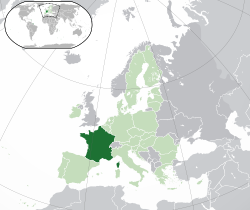
During the Iron Age, what is now Metropolitan France was inhabited by the Gauls, a Celtic people. The Gauls were conquered in 51 BC by the Roman Empire, which held Gaul until 486. The Gallo-Romans faced raids and migration from the Germanic Franks, who dominated the region for hundreds of years, eventually creating the medieval Kingdom of France. France emerged as a major European power in the Late Middle Ages, with its victory in the Hundred Years’ War (1337 to 1453) strengthening French state-building and paving the way for a future centralized absolute monarchy. During the Renaissance, France experienced a vast cultural development and established the beginning of a global colonial empire. The 16th century was dominated by religious civil wars between Catholics and Protestants (Huguenots).
France became Europe’s dominant cultural, political, and military power under Louis XIV. French philosophers played a key role in the Age of Enlightenment during the 18th century. In 1778, France became the first and the main ally of the new United States in the American Revolutionary War. In the late 18th century, the absolute monarchy was overthrown in the French Revolution. Among its legacies was the Declaration of the Rights of Man and of the Citizen, one of the earliest documents on human rights, which expresses the nation’s ideals to this day. France became one of modern history’s earliest republics until Napoleon took power and launched the First French Empire in 1804. Fighting against a complex set of coalitions during the Napoleonic Wars, he dominated European affairs for over a decade and had a long-lasting impact on Western culture. Following the collapse of the Empire, France endured a tumultuous succession of governments: the monarchy was restored, it was replaced in 1830 by a constitutional monarchy, then briefly by a Second Republic, and then by a Second Empire, until a more lasting French Third Republic was established in 1870. By the 1905 law, France adopted a strict form of secularism, called laïcité, which has become an important federative principle in the modern French society.
France reached its territorial height during the 19th and early 20th centuries, when it ultimately possessed the second-largest colonial empire in the world. In World War I, France was one of the main winners as part of the Triple Entente alliance fighting against the Central Powers. France was also one of the Allied Powers in World War II, but came under occupation by the Axis Powers in 1940. Following liberation in 1944, a Fourth Republic was established and later dissolved in the course of the Algerian War. The Fifth Republic, led by Charles de Gaulle, was formed in 1958 and remains to this day. Following World War II, most of the empire became decolonized.
Throughout its long history, France has been a leading global center of culture, making significant contributions to art, science, and philosophy. It hosts Europe’s third-largest number of cultural UNESCO World Heritage Sites (after Italy and Spain) and receives around 83 million foreign tourists annually, the most of any country in the world. France remains a great power with significant cultural, economic, military, and political influence. It is a developed country with the world’s sixth-largest economy by nominal GDP and eight-largest by purchasing power parity. According to Credit Suisse, France is the fourth wealthiest nation in the world in terms of aggregate household wealth. It also possesses the world’s second-largest exclusive economic zone (EEZ), covering 11,035,000 square kilometres (4,261,000 sq mi).
French citizens enjoy a high standard of living, and the country performs well in international rankings of education, health care, life expectancy, civil liberties, and human development. France is a founding member of the United Nations, where it serves as one of the five permanent members of the UN Security Council. It is a member of the Group of 7, North Atlantic Treaty Organization (NATO), Organisation for Economic Co-operation and Development (OECD), the World Trade Organization (WTO), and La Francophonie. France is a founding and leading member state of the European Union (EU).
|









 Robert of Anjou (Italian: Roberto d’Angiò), known as Robert the Wise (Italian: Roberto il Saggio; 1276 – 20 January 1343), was King of Naples, titular King of Jerusalem and Count of Provence and Forcalquier from 1309 to 1343, the central figure of Italian politics of his time. He was the third son of King Charles II of Naples and Maria of Hungary, and during his father’s lifetime he was styled Duke of Calabria (1296-1309).
Robert of Anjou (Italian: Roberto d’Angiò), known as Robert the Wise (Italian: Roberto il Saggio; 1276 – 20 January 1343), was King of Naples, titular King of Jerusalem and Count of Provence and Forcalquier from 1309 to 1343, the central figure of Italian politics of his time. He was the third son of King Charles II of Naples and Maria of Hungary, and during his father’s lifetime he was styled Duke of Calabria (1296-1309). 
 France, officially the French Republic (French: République française), is a sovereign state comprising territory in western Europe and several overseas regions and territories. The European part of France, called Metropolitan France, extends from the Mediterranean Sea to the English Channel and the North Sea, and from the Rhine to the Atlantic Ocean. France spans 640,679 square kilometres (247,368 sq mi) and has a total population of 67 million. It is a unitary semi-presidential republic with the capital in Paris, the country’s largest city and main cultural and commercial centre. The Constitution of France establishes the state as secular and democratic, with its sovereignty derived from the people.
France, officially the French Republic (French: République française), is a sovereign state comprising territory in western Europe and several overseas regions and territories. The European part of France, called Metropolitan France, extends from the Mediterranean Sea to the English Channel and the North Sea, and from the Rhine to the Atlantic Ocean. France spans 640,679 square kilometres (247,368 sq mi) and has a total population of 67 million. It is a unitary semi-presidential republic with the capital in Paris, the country’s largest city and main cultural and commercial centre. The Constitution of France establishes the state as secular and democratic, with its sovereignty derived from the people.


